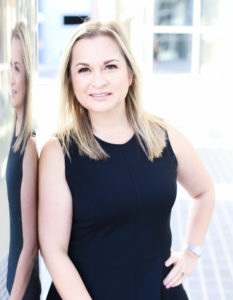Professional real estate investors refer to a single-source economic region like that of the Permian Basin as a “speculative market.” Anyone who’s ever owned even a house in the area has probably either reaped the rewards or paid the penalty when it came time to sell, depending on the price of oil at the time of sale. Booms and busts are inevitable.
But as many times as people have declared, This boom is different, it’s going to last—and been wrong—this bust is different indeed. Most downturns are brought on by a global oversupply, a situation whose resolution timing is hard to predict. This one, instead, came about due to a single cataclysmic event.
With COVID-19, there is hope for a quick, clearly defined recovery. As soon as we get past this it’ll suddenly be back to normal. When enough people get vaccinated or have had the disease and recovered….
This “light at the end of the tunnel” hope has changed how commercial property owners and managers are dealing with leases these days, said Lucy Sisniega of Cox Real Estate in Midland. Her clients include both retail and office sectors.
Retail lease rates before COVID-19 restrictions took effect were between $21 and $25 per square foot per month. Top rates at the beginning of 2021 were closer to $22, a drop she listed as around 20 percent.
Because most commercial leases are five years, and almost everyone expects prices to rebound well before the end of that time frame, owners are reluctant to drop rates very much during what is perceived as a short downturn. But there’s also no question that tenants are hurting right now, and are in danger of defaulting on the entire lease unless they get some relief.
“They’re trying to negotiate in other ways,” Sisniega said. For example, some are trying to give a few months free rent instead of going too low on the lease rate because they feel that the market is going to come back. They’re saying COVID isn’t going to stay forever.”
The other option is to reduce rates but sign a shorter lease, she said, “Unless it’s a new center.”
For a new center, in most cases, a longer lease is required to recoup buildout costs.
Otherwise, “I haven’t seen any drastic rate drops.”
New businesses were particularly hard hit, opening right as the pandemic sent everyone home. Sit-down restaurants were hit particularly hard. Sisniega heard of a number of new business deals that were cancelled or postponed pending a resolution of the pandemic.
Some businesses actually have boomed in the situation, she said. Liquor stores, car washes, and drive-through-window fast food restaurants top the list.
With bars mostly closing, liquor consumption has shifted to the home environment, she noted, as people look for a way to cope with stress.
Car washes involve little outside contact, other than the debit card machine at the entrance.
Working with Cox Real Estate—as in Bobby Cox, owner of Rosa’s, Taco Villa, and Texas Burger, among other investments—Sisniega is aware that those establishments and others, including Chic-Fil-A, have fared well through their drive-through lanes. Rosa’s has added a second lane at several stores to handle the traffic.
Office space has been affected by COVID-19 in at least two ways. There’s the general downturn and associated layoffs that have affected every sector of business. But in retail, if a location is going to be open at all, it needs in-person staffing.
Not so with many office jobs—they can be done just as well from home as at the office, especially when meetings are shifted to meeting sites like Zoom. Office leasing levels in Midland are down from close to 100 percent to 88 percent as of late 2020.
So even when oil and gas prices rebound, things will be different, Sisniega believes. “In many businesses you see signs that say, ‘Appointment Required.’ So people are working by schedule,” which will reduce the need for large waiting areas and lobbies. Businesses may still need a receptionist, to make those appointments, but that person will not need to be in the office to help people check in. That can be done either in the office or remotely.
Most businesses in Sisniega’s loop are indeed optimistic that things will come back sooner rather than later. But the operations will be very different. She noted that retail space landlords are reevaluating what prospective tenants they want to market to, businesses that have proven to do well or at least hang on during a pandemic.
HOME
For residential real estate a typical downturn does hurt, but it offers benefits as well—and 2020 followed this pattern.
In fact, according to Permian Basin Board of Realtors President Darla Davis, the year overall was pretty good for residential real estate. “We wound up having more houses on the market than in some previous years, but the only ‘slow down’ months were in April, May, and June,” she said. “Because we had more houses on the market, the days on the market increased. Prices remained steady with a bit of an uptick throughout the course of 2020.”
So the bad wasn’t all that bad. The good news in a downturn is always that housing—and infrastructure in general—has a chance to catch up after being overwhelmed in the preceding boom.
Davis observed that multifamily housing construction continued all year. “Apartment complexes have had a chance to catch up. That will in turn allow housing to catch up. We believe having those two pieces of the puzzle in place will provide an opportunity for price adjustments on single family housing.
“We often anticipate a +/- 2 to 5 percent adjustment just on the supply and demand factors,” she continued. “This directly affects price changes and adjustments. Some years there are greater adjustment in either direction.”
Another fact that’s almost a given is that the Permian, while affected by any downturn, is hurt less than other basins because of its low production costs and existing infrastructure. In 2016’s price collapse, the Permian was often called, “the last basin standing.” When asked if 2020 saw a migration to Midland from other basins, Davis said there was more than just one migration happening. “We did see an increase of some of those folks moving, but what we saw more of was the people moving from apartments and company housing to single family properties.”
The Effects of the Work-from-Home Economy
Working from home has begun to change home buying for some, Davis said. In a city the size of Midland, proximity to work was a small issue in past days, and may be less so now. “Many are now looking for an additional bedroom or office space that they might not normally look for. The office proximity was a factor for some, but moving forward probably won’t be nearly as much so,” she said.
For office jobs like engineering, geology, and accounting, location now may matter even less. Stories abound of office employees working from a lake house, a geographically distant family member’s home, or some other out-of-town spot. Davis has seen little of that in Midland, but has observed a related trend. “In many cases people have not necessarily moved from Midland but they are looking at and buying second homes or alternative living arrangements at other locations that they are able to work from.”
Davis correctly observed that, while COVID-19 has made this downturn different, roller coaster economics are not new in the Oil Patch—and rebounds have always also been part of the mix.
“Oil and gas are the life blood of our region and the nation. It is the nature of the petroleum industry to affect many aspects of the economy including housing in our local area.
“In boom times we struggle to keep up. In times when we are not booming we struggle to keep our inventory and prices at levels that keep us afloat. It is a delicate balancing act and we all attempt to be forward thinking in all our actions.”
It is interesting to note that commercial real estate seems to have been hit harder than residential. With stay-at-home orders strongly suggested, and followed with varying degrees of strictness by most, people demanded more of their homes and less of their retailers than they had in decades. Homes became offices, entertainment centers, and even gyms, as Peloton’s sales exploded to the point that they vastly exceeded the company’s ability to fill orders.
How many of these changes will be undone when quarantines and masks are no longer needed? It seems clear that things may never go back exactly as they were before.
Paul Wiseman is a freelance writer in the oil and gas sector. His email address is: fittoprint414@gmail.com











